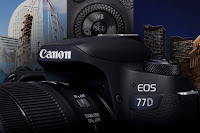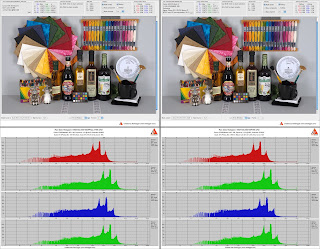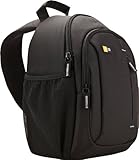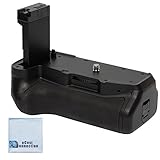Home
Unlabelled
ALL ABOUT 77D AND ALL TRICK TO CLICK AS PROFESSIONAL WITH THE 77D
PRICE : 60,000/-(INR) OR $699.99
 LINK: https://www.amazon.in/gp/product/B06Y2RSYN7/ref=as_li_qf_asin_il_tl?ie=UTF8&tag=techvibe05-21&creative=24630&linkCode=as2&creativeASIN=B06Y2RSYN7&linkId=bbb6c78386fe4d346ab72b79486dab09
LINK: https://www.amazon.in/gp/product/B06Y2RSYN7/ref=as_li_qf_asin_il_tl?ie=UTF8&tag=techvibe05-21&creative=24630&linkCode=as2&creativeASIN=B06Y2RSYN7&linkId=bbb6c78386fe4d346ab72b79486dab09
77d camera accessories:

27 Steps to the Perfect Canon EOS Rebel T7i / 77D Setup
 While mirrorless cameras have been using phase detection auto focus in imaging sensors for some times, DSLRs typically use a separate phase detection auto focus sensor for focusing while the mirror is down and the viewfinder in use, and switch to contrast detection auto focus on the actual imaging sensor when the mirror is up and you’re using Live View or recording a video.
While mirrorless cameras have been using phase detection auto focus in imaging sensors for some times, DSLRs typically use a separate phase detection auto focus sensor for focusing while the mirror is down and the viewfinder in use, and switch to contrast detection auto focus on the actual imaging sensor when the mirror is up and you’re using Live View or recording a video.


PRICE : 60,000/-(INR) OR $699.99
 LINK: https://www.amazon.in/gp/product/B06Y2RSYN7/ref=as_li_qf_asin_il_tl?ie=UTF8&tag=techvibe05-21&creative=24630&linkCode=as2&creativeASIN=B06Y2RSYN7&linkId=bbb6c78386fe4d346ab72b79486dab09
LINK: https://www.amazon.in/gp/product/B06Y2RSYN7/ref=as_li_qf_asin_il_tl?ie=UTF8&tag=techvibe05-21&creative=24630&linkCode=as2&creativeASIN=B06Y2RSYN7&linkId=bbb6c78386fe4d346ab72b79486dab09- EasyCover Silicone Protective Case For Canon 77D Camera, Camouflage

- JJC Reversible Lens Hood Shade for Canon EF 70-300mm f/4-5.6 IS II USM replaces Canon Lens Hood ET-74B
- Docooler Wired Remote Shutter Release for Canon, Wired Control Cable Cord for Canon 200D 77D M6 M5 80D 70D 60D 800D 760D 750D 700D 650D
- 7X Shatter Protection for Canon EOS 77D Using Unbreakable Hybrid Nano Glass Film. India’s No.1 Brand


Best Lenses for Canon 77D

Best Prime Lenses for Canon 77D:
Canon EF-S 24mm f/2.8 STM
Sigma 30mm f/1.4 DC HSM
Canon EF 50mm f/1.8 STM
Canon EF 85mm f/1.8 USM
Canon EF-S 24mm f/2.8 STM

Sigma 30mm f/1.4 DC HSM
Canon EF 50mm f/1.8 STM
Canon EF 85mm f/1.8 USM
Best Zoom Lenses for Canon 77D:
- Open the box, find the battery and charger and plug it in. If you have another charged LP-E6/LP-E6N battery available, you can continue to the battery-required steps without a wait.
- While the battery is charging, unpack the other items you want from the box. This is a good time to install the neck strap.
- Download and install the Canon Solution Disk software on your computer to get support for the latest camera(s). Canon Digital Photo Pro (DPP), EOS Utility, Photostitch and Lens Registration Utility are the options I manually include in the install.
- Insert the battery (after charging completes).
- Power the camera on.
- The date and time setup screen will show at startup the first time. Use the Rear Control dial and Set button to update this information.
- Insert a memory card (don't forget to format the card via the tools menu option before taking pictures).
- Set the camera's mode to Av, Tv or M (some modes provide only a small subset of available menu options).
- Scroll through all of the menu tabs to configure the camera as follows:
- Shooting Menu, Tab 1: Image quality: set RAW to "RAW"
- Shooting Menu, Tab 1: Image review: 4 sec.
- Shooting Menu, Tab 1: Release without card: Off (highly recommended)
- Shooting Menu, Tab 1: Lens aberration correction: All disabled (though I suggest leaving CA correction enabled for most uses - all can be applied in DPP)
- Shooting Menu, Tab 3: Picture Style: Neutral with Sharpness Strength set to "1" (Note: the low contrast "Neutral" picture style provides a histogram on the back of the camera that most-accurately shows me blown highlights and blocked shadows on the camera LCD. I usually change the Picture Style to "Standard" in DPP after capture.)
- Shooting Menu, Tab 3: Long exposure noise reduction: I usually have this option set to "Auto", but my choice varies for the situation.
- Shooting Menu, Tab 3: High ISO speed noise reduction: Off (noise reduction is destructive to images details - I prefer to add NR sparingly in post)
- Shooting Menu, Tab 2: White balance: AWB-W (Auto: White priority)
- Playback Menu, Tab 3: Histogram disp: RGB (I want to monitor all three color channels for blown or blocked pixels)
- Tools Menu, Tab 1: Auto rotate: On/Computer only (this provides the largest playback image size on the camera LCD)
- Tools Menu, Tab 2: Viewfinder display: Viewfinder level: Show, VF grid display: Show, Flicker detection: Show
- Tools Menu, Tab 3: Beep: Disable
- Tools Menu, Tab 4: Custom Functions: C.Fn I:ISO expansion: On
- Tools Menu, Tab 4: Custom Functions: C.Fn I:Exposure comp. auto cancel: Disable
- Tools Menu, Tab 4: Copyright information: Enter author's name: [your name]
- Display Level Menu: Mode guide: Disable
- Display Level Menu: Feature guide: Disable
- My Menu: Add the first tab; Register the following options for Tab 1: Long exposure noise reduction, Mirror lockup, Format card, Date/Time/Zone (great for monitoring what time it is), Sensor cleaning, Expo.comp./AEB (back up near the top of the list)
What is Dual Pixel Auto Focus?
On these new Canon CMOS imaging sensors, each pixel has two photo diodes which can operate separately or together. Each diode has a separate lens over it. When light goes through those lenses and hits the diodes, the processor analyzes each diode’s signal for focus and, once focus is achieved, the signals are then combined to record the image. Each pixel on the sensor, then, has a dual role.
That dual role is what makes DPAF sensors different. In other kinds of imaging sensors, some of the pixels are used for focus and the rest record the image, but none does both.
In Canon imaging sensors, 80% of the pixels (horizontally and vertically) play that dual role. The sensor on the EOS 5D Mark IV, for instance, is 6720 x 4480 pixels. At 80% coverage (5376 x 3584) more than 19 million pixels have DPAF. By comparison, the Sony a7R iii sensor is 7952 x 5304 pixels and has 399 phase detection auto focus points.
And video is where DPAF can really shine, providing quick and accurate focus without the lens zooming in and out seeking focus. DPAF also makes following and keeping focus on moving subjects much easier and more accurate. And, you can easily manage focus and switch between subjects while shooting video using the touch screen in live view. For still photography, you can tap anywhere on the LCD screen on the back of the camera and get quick, accurate focus.
What Does Having a Crop Sensor Camera?
Crop Sensor Advantages – On the other side, while a crop sensor DSLR doesn’t provide the same level of image quality as a full frame DSLR, it does offers major advantages when it comes to cost. It can also be very effective for telephoto photography for the extra reach gained from the crop sensor multiplier. For example, this can be very useful when shooting sports, wildlife, and other types of photojournalism. Just imagine that on a Canon crop frame body such as a Canon 7D; your Canon 70-200mm f/2.8 lens is effectively a 112-320mm lens!
Let me also clarify that this is simply a benefit, it doesn’t mean that you SHOULD use a crop sensor DSLR when shooting these types of photography. This is going to depend on your intended use, budget, and so forth. For those on a budget (which I think is most of us), the additional focal length and low cost of the DSLR are great a
dvantages. But, for a professional, you will still get the best overall quality by having a full frame DSLR paired with a longer telephoto lens.
This is why you commonly see professional sports photographers using cameras like the Canon 1D X or Nikon D4 paired with a 300mm (Canon | Nikon) or 400mm (Canon | Nikon) low light lens. However, this is a costly setup as your lens and body are going to cost upwards of $15,000 – $20,000.
However, for the enthusiast or non-professional sports photographer, it is much more reasonable to pay $3,000 – $5,000 for a setup with similar quality using a crop sensor DSLR and a standard 70-200mm 2.8 Lens (Canon | Nikon). Not only is it more affordable, but it is also much more compact and portable as well.


Finally, as we mentioned a crop sensor DSLR is not as expensive as full frame DSLR. This is because manufacturing a full frame sensor is far more expensive and can cost over 20x that of a crop frame sensor. High-end crop sensor DSLRs can provide quality similar to that of full-frame DSLRs at a fraction of the price.
CROP FACTOR:
Crop factor describes the size difference between a 35mm film frame and your camera's sensor. For example, if your camera has a crop factor of 2, it means that a 35mm film frame is twice as large as your camera's sensor.
Modern digital cameras are fitted with sensors of varying size. The best digital SLRs have sensors which are the same size as 35mm film, so they have a crop factor of 1 (this is known as "full-frame"). At the other end of the scale, digital compact cameras have very small sensors, and high crop factors of 5 of 6. The higher the crop factor, the more noticeable the "zooming in" effect for a given focal length.
You can calculate your camera's crop factor by dividing the diagonal length of a 35mm frame by the diagonal length of your camera's sensor. The numbers can get a bit convoluted, but thankfully camera manufacturers list the crop factor in the user manual to save you time and effort.
Lens covering power:
What does change, is how much of the image that the lens is projecting into the camera is actually captured. Remember I mentioned something called covering power before? This is where it comes into play.
Okay, what you see above is a representation of how the light coming through your lens applies to each of the different sized sensors.
As your lens is circular, the image produced by it is also a circle. Your camera captures a rectangular portion of that circular image. Notice how much less of the whole image the smaller APS-C sensors actually capture.
Any lenses that are compatible with full frame cameras must produce a circle or light larger than the sensor, otherwise, you'd get image cut-off.
That is why lenses made especially for crop sensor bodies (called Dx lenses by Nikon) will NOT work on a full frame camera. This will happen if it were attempted (but they usually won't fit on the mount anyway).
 Reviewed by TechVibe
on
January 17, 2019
Rating: 5
Reviewed by TechVibe
on
January 17, 2019
Rating: 5


No comments: